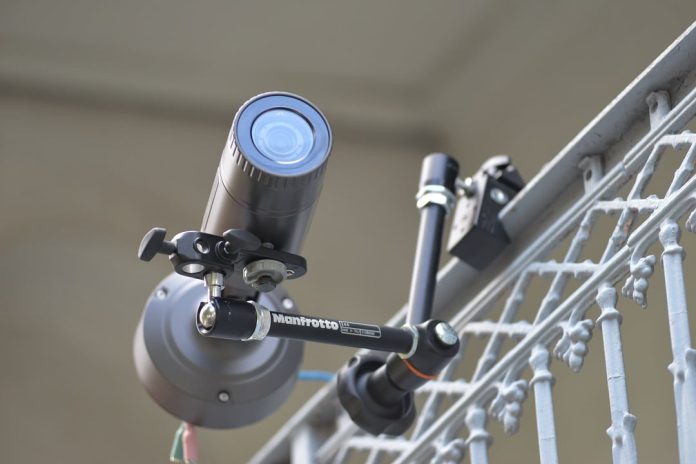SAMSUNG’s 5MP SNO-8081R bullet, distributed locally by EOS, incorporates a 1/1.8-inch 6MP CMOS sensor, a 3.6-9.4mm motorized varifocal lens with auto-focus, 120dB WDR, built-in IR to assist in low light applications and a resolution of 2592 x 1944 pixels. This is a powerful and well-made camera that takes fixed surveillance capabilities to an elevated level.
AS soon as you pick up SAMSUNG’s 5MP SNO-8081R bullet, you get a sense of its quality. Samsung makes nice gear and this SNO-8081R bullet camera is no different. The unit has a tilt-mount, a metal alloy body and a simple and detachable poly sunshade. The PoE SNO-8081R has IP66/IK10 ratings against environment and vandalism and proffers an operating temperature between -40 and 55C, which is at the upper end of good. Emerging from a heavy cross-cut rubber flange on the rear are RJ45, audio and I/Os. Wherever you look and touch, build quality is superb and attention to detail is exemplary.
At the heart of the camera is a 1/1.8-inch 6MP progressive scan CMOS sensor with 3096 x 2094 pixels in total and 2616 x 1976 effective pixels of resolution. This sensor is quoted as having colour performance at 0.3 lux at 1/30th of a second shutter speed when wide open. According to specs, the SNO can handle static scenes down to 0.005 lux with a shutter speed of 2 seconds, also at f1.3, though that sort of night work is probably best left to artists like Brassai. With smart IR activated and the camera in night mode you get monochrome performance in 0 lux to a range of 30m.
The motorized varifocal F1.3 lens is coated with magnesium fluoride on multiple elements and has a focal length of 3.93-9.4mm – that’s a zoom of 2.4x – giving horizontal angles of view of 93.4 degrees at the wide end and 39.2 degrees at tele. Minimum focusing distance is 0.5m at a 3.93mm focal length. Overall frame rate is 30ips in H.265/H.264/MJPEG. This camera’s compatibility with H.265/H.264 technology means it will support current and future compression protocols.
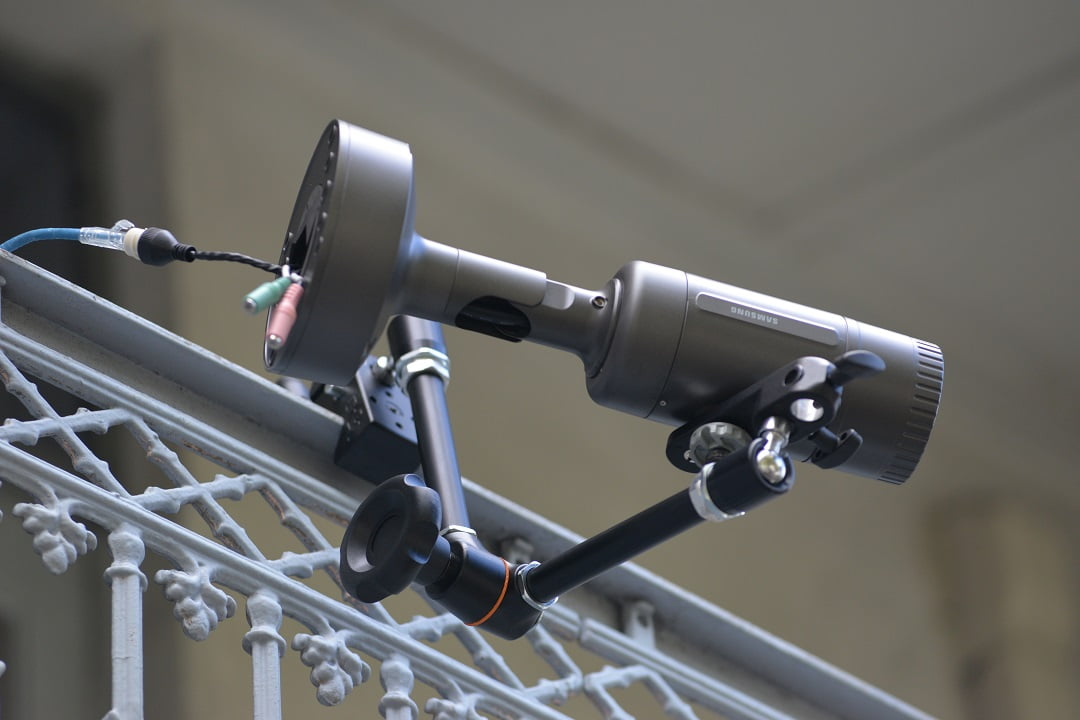
Signal to noise ratio is 50dB, there’s auto day/night, WDR is 120dB and there’s backlight compensation, contrast enhancement SSDR, digital noise reduction, motion detection, privacy masking of 6 areas, gain control, a collection of white balance options, lens distortion correction – this is pretty cool to have – and electronic shutter speeds from 2-12,000ths of a second. There’s also intelligent video analytics tampering and audio detection – with metadata, alarm I/Os, alarm triggers alarm input, motion detection, tamper detection, audio detection, Network disconnect alert, and an alarm events File upload via FTP and E-mail with notification via E-mail.
Local storage is SD/SDHC/SDXC or NAS recording at event triggers, and there’s an external output to drive things. Neat features include a pixel counter so installers can make sure they commission with sufficient resolution for operational requirements for face recognition or LPR and there’s also a Flip/Mirror 90/270-degree option and this last is of note because we have it applied it to 180-degrees for this test so we could hang the camera from a Magic Arm using the tripod screw hole located on its underside.
Video Compression Formats are H.265 Main, H.264 (MPEG-4 part 10/AVC) in 3 simultaneous profile streams – Main/Baseline/High and MJPEG. Bitrate control method is H.265/H.264: CBR or VBR, and MJPEG: VBR.
There’s audio-in and out giving 2-way communication, audio compression is G.711 u-law/G.726 selectable, G.726 (ADPCM) 8KHz, G.711 8KHz, G.726: at 16Kbps, 24Kbps, 32Kbps, 40Kbps. This PoE camera uses 11.5W or 12.95W with the heater on. Dimensions are 82.4 x 87.0 x 348.3mm and weight is 1.42kg. Given what is can do, the camera is relatedly compact – much of its physical presence lies in that heavy-shouldered base plate.
Testing the Samsung SNO
Our standard test rig for is a dedicated Dell 9020 server with i7-4770 quad-core processor with 8 threads per core offering a base clock speed of 3.4GHz and 8GB of RAM. We have an AMD Radeon R7 250 graphics card with 2GB of RAM taking care of video. We’re using a Netgear GS108P ProSafe 8-port Gigabit switch with 4-port PoE for power and comms and the other cameras on the network are a Vivotek hemispheric and an Axis M1125 we’re lens testing with. Neither is recording. We are viewing the camera through Samsung’s iPolis Webviewer with comms variously supported by a Gigabit LAN and a 20/20 synchronous Internet link.
First impressions? This SNO-8081R is at another level when compared to ordinary bullet cameras. It’s not just the elevated resolution, which allows strong digital zooming. That optical zoom, which is 9.4mm at the long end, is really useful in typical street views. It lets you zoom in to crop unnecessary walls and trees so as to deliver tighter optical views at that same high resolution, giving excellent digital zooming at closer ranges. It’s only 2.4x optical but the fact it’s at your fingertips makes it really worthwhile – you use it because it allows you to confirm or deny suspicions. I find myself playing Grantchester with one of my distant neighbours in the back lane.
Colour rendition, general acuity and sharpness are all excellent. In areas of sunlight and shade, images are composite, with none of the black holes you often see. WDR performance is very solid, too. I spent a lot of time playing around with this camera during the test. High resolution and optical zoom gives you that capability, though don’t expect PTZ simplicity of zoom and autofocus – shifting focal length is a process involving backing out of Viewer and logging into Setup, then zooming one step at a time, then focusing. This works well with good internet speeds but I’d prefer digital zoom and focus in the same screen as you’d have it with a true VMS. This said, there are no scissor lifts involved with tweaking this camera’s zoom and focus either, which is a saving of at least $750 every single time if the unit is mounted high and you need to call in a lift and operators.
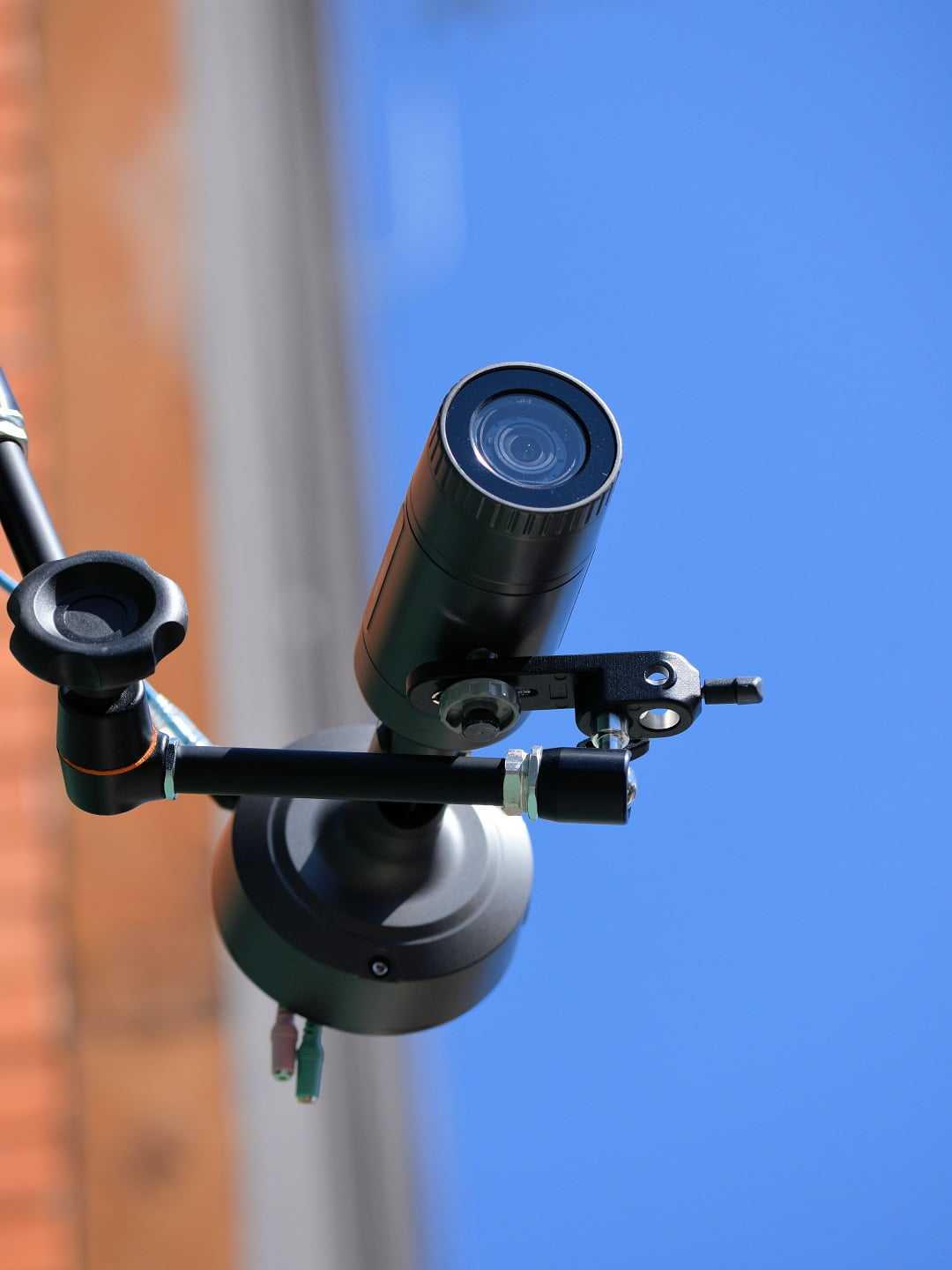
I get started out the back in the back lane with a depth of field around 70 metres and with side light of 80,000 lux. The SNO is mounted on a Manfrotto Magic Arm with a super clamp, which is an excellent and robust mobile mounting solution for roving camera tests like this one. We start at the widest focal length with the camera in default setting. Colour rendition is great and detail is very, very high. At 25ips there’s some stepping of the image with moving objects but it’s slight. Barrel distortion looks to be about 9 per cent at the wide end. The only optical flaw I can see is chromatic aberrations – both longitudinal and lateral which relate to lens characteristics at the wide end. CAs wide open are common with fast lenses and these disappear as the focal length increases and aperture reduces, as does the barrel distortion. There’s a notable lack of flare and ghosting from this lens, which is nice to see and vital for an outdoor camera not wearing its standard sunshade.
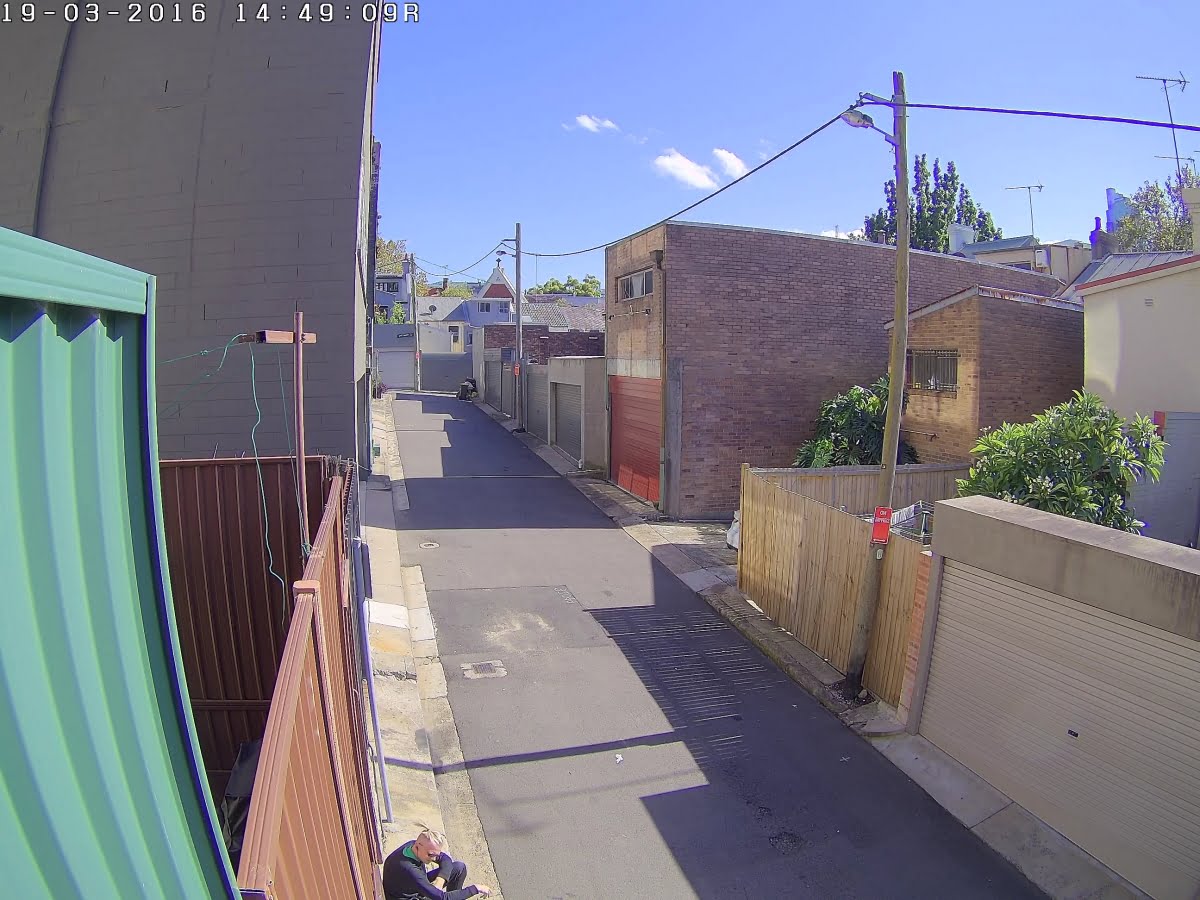
Levels of detail are so excellent I can’t help but zoom all the way the way in to full optical tele and refocusing so I can start messing around with digital zoom at the long end. As the afternoon wears on, I amuse myself by forming suspicions about loiterers in the back lane – inner cities are strange places and there’s no lack of odd behaviours to wonder about. Something that’s nice is that as the afternoon wears on and shadows fall over the lane, the image remains very true – no weird colours or spooky shadows. It’s a nice image stream that’s for sure.
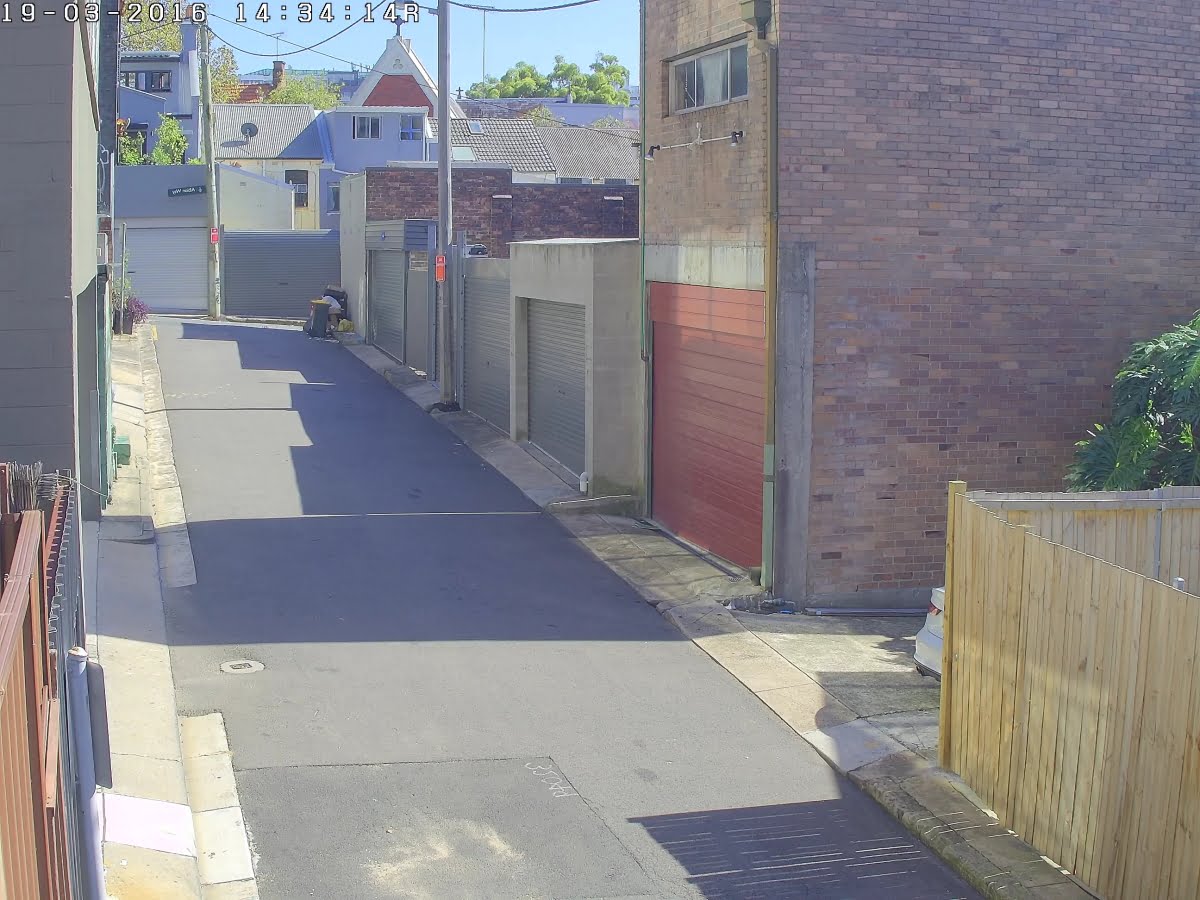
Performance proves consistent and I find that at full wide I can jag face recognition out past 12m from the lens using just digital zoom, which is pretty good going at a 3.6mm focal length. And at 50m I reckon I am getting confirmation of known ID with full detail of clothing, though there’s blocking of facial detail. I try and fail to get a license plate at 70m but I can see make, model and colour, as well as look into the garage from which the car is emerging. It’s great work by the Samsung. And when you wind in that optical zoom to 9.4mm and cut out all the noise out of the image, you’re getting face recognition at 50-plus metres with digital zoom still to come.
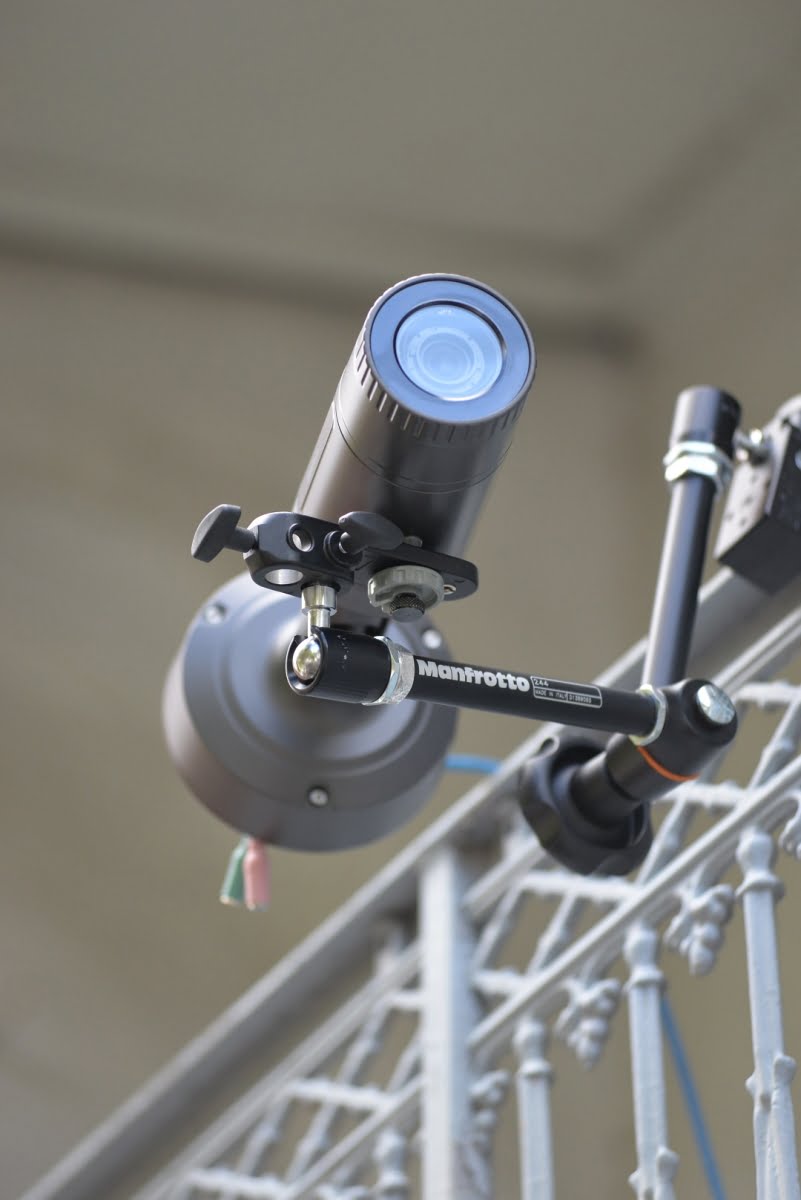
The next part of the test I take the camera out the front and attach it to the balcony overlooking Bellevue St. The depth of field is 50 metres to Albion Lane and at least 80 metres from the lens to Albion St. These distances make for a challenging application for any CCTV camera as afternoon goes into night and I’m keen to see how the SNO-8081R performs in this application. We start out wide – I’m viewing and recording a lot of nothing when it comes to overhanging terraces, street trees and airspace where humans generally can’t go without defying the weakest force in the universe.
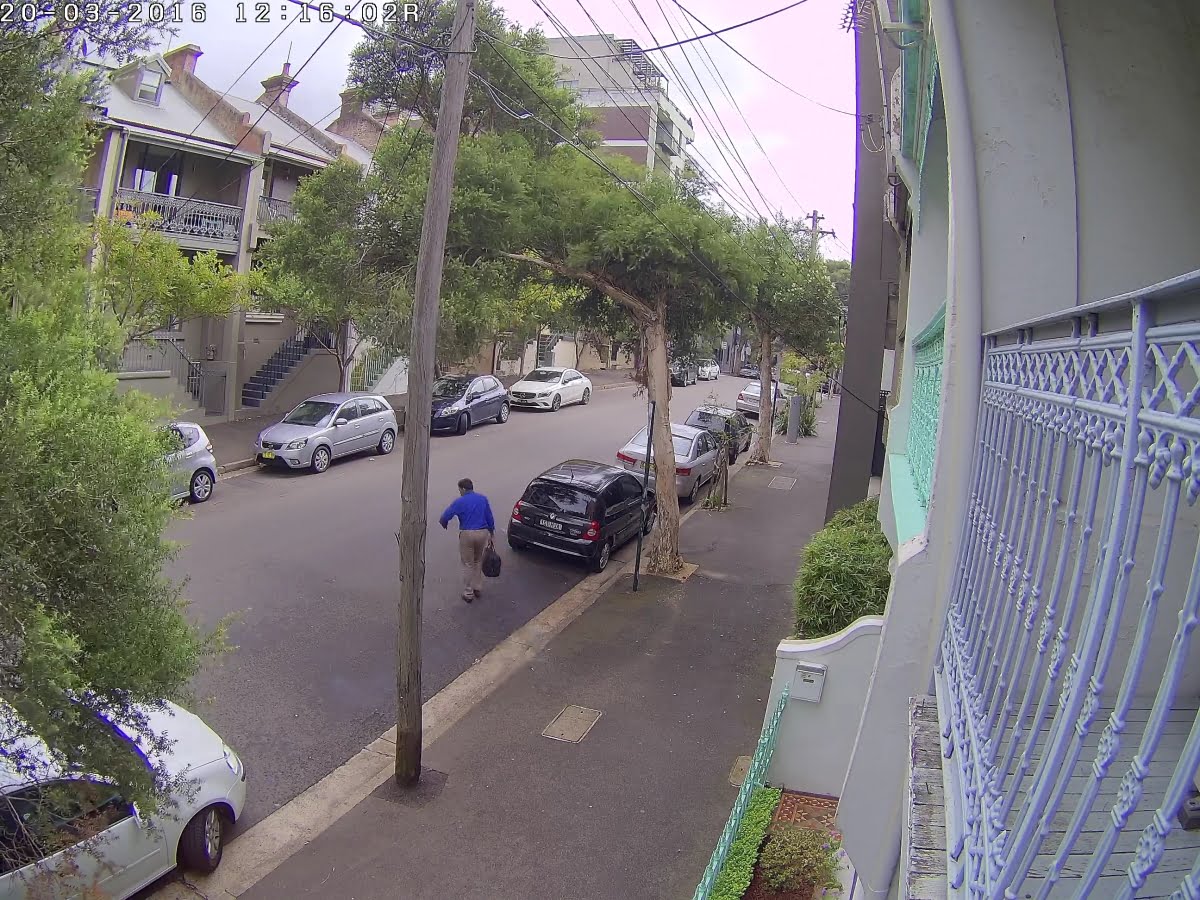
Full wide – note CAs in areas of high contrast and some barrel distortion
Before I zoom in, I have a play around with digital zoom at a 3.6mm focal length. Performance is strong. I’m getting number plates past 20m, which is good going and situational awareness is much deeper – 50 metres and more. With this camera, situational awareness doesn’t mean a pixelated white blob. It means a white 1987 Toyota Corona with a P plate at 55m – if I can’t get a plate I can get a plate colour. There’s simply more detail wherever you look with this camera. Next I try jagging some number plates of vehicles rat-running the street at 50kmph. The cars are an oblique angle to the lens and a range of about 22m, which is in range for static plates.
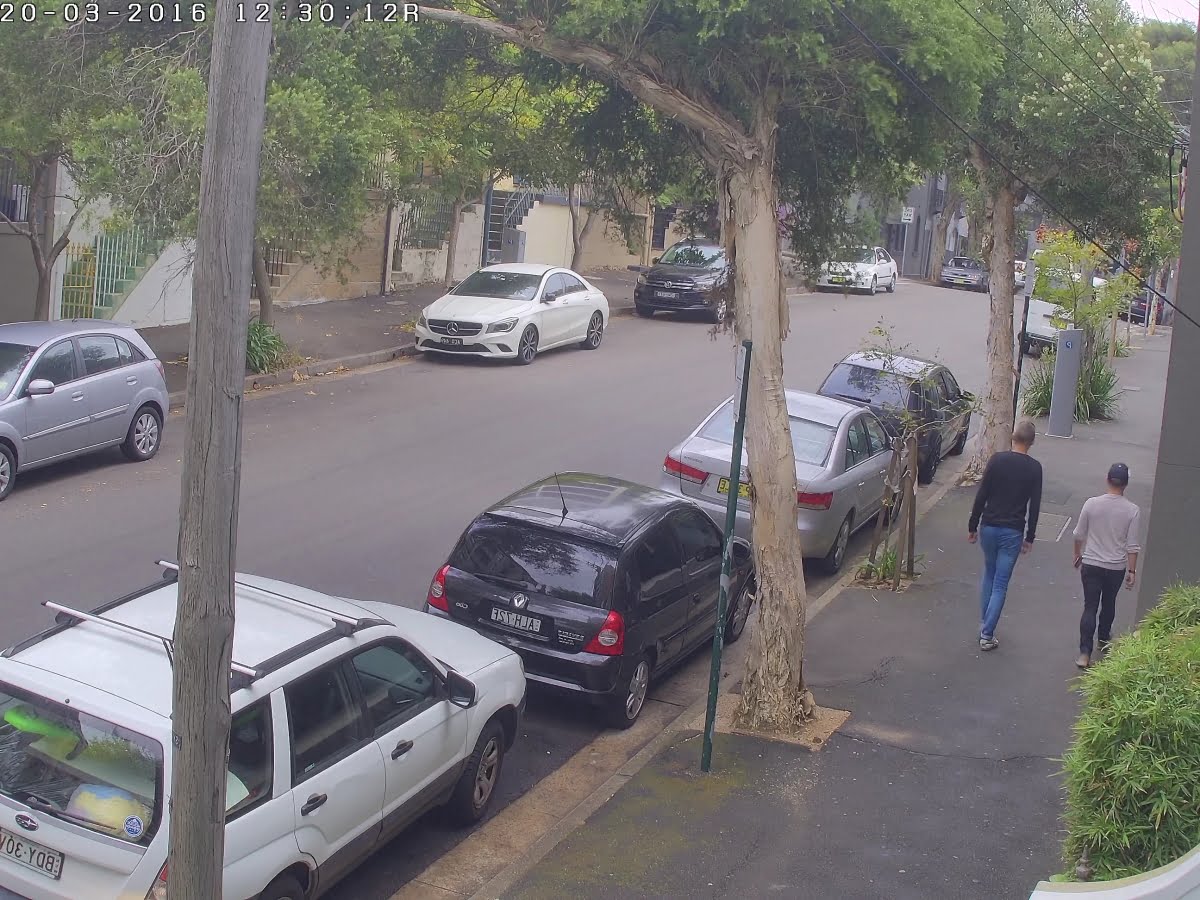
Full optical zoom
I can get vehicle type, even the number of occupants and the colour of the plate but not the plate itself – the tone mapping halo around these fast-moving vehicles is costing me that fine detail. Next, I zoom all the way in to 9.4mm and all the static number plates out to 30m or so are available but when a silver Corolla blasts up the street at 50kmph-plus, I still can’t get dig that plate out of the tone mapping halo. There’s no trouble with people or slower moving vehicles – 10-15kmph – but there’s a point digital processing can’t keep up with these rev-heads.
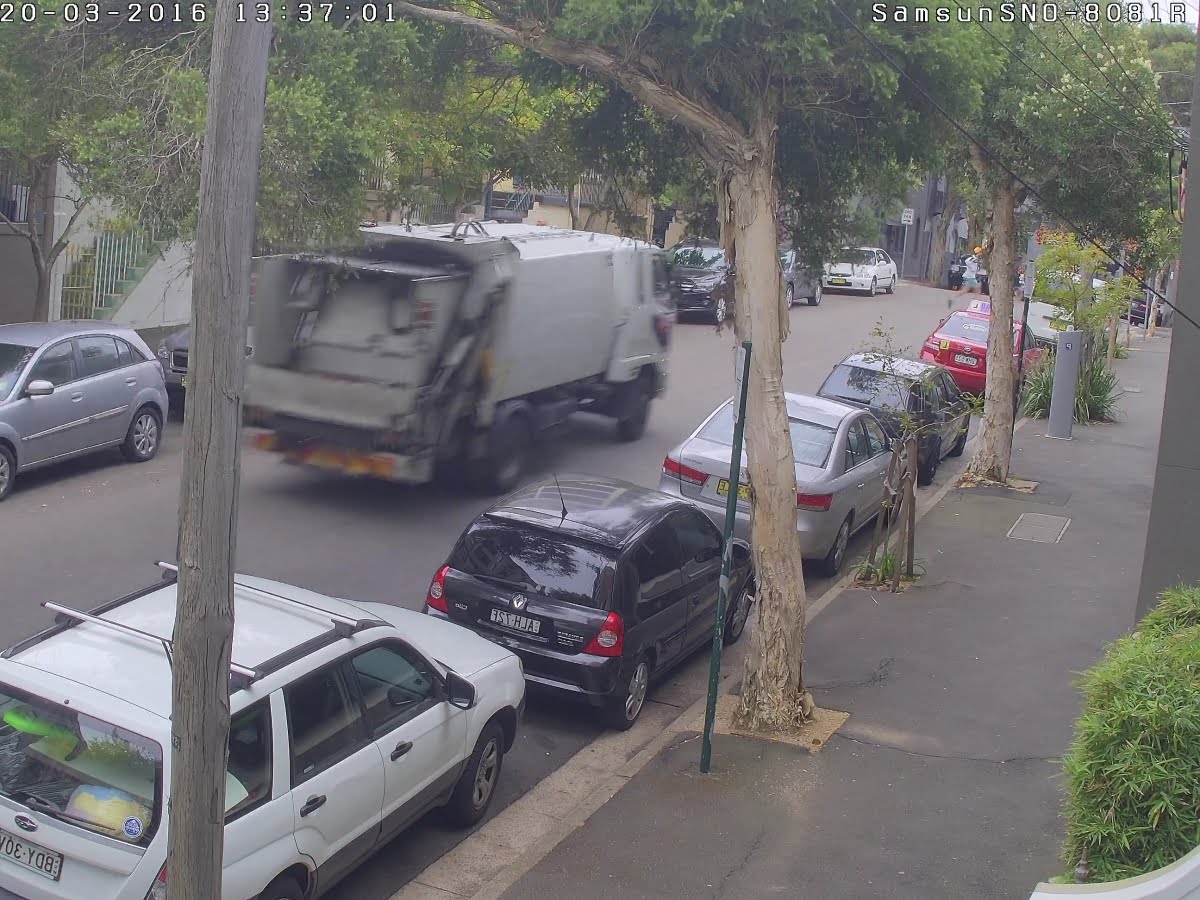
No moving plate but I do get nice images of a chap in an orange cap jogging over the road at least 45m from the lens…
Now the sun comes out and the scene has deep shadow and bright sunlight and again, it’s a fine image from Samsung SNO-8081R. I’ve decided to stay at 9.4mm – it’s a nice focal length for a camera mounted above a street – I’ve carved off the sides of the terraces, trees and all the guff I don’t care about and am getting lovely face recognition to 20m and static plates up to 30m from the lens. This is how all CCTV images should look, I think to myself, sipping my tea. There’s a lot of power in a high resolution image and a longer focal length. I often sit in front of 1080p cameras in good light and can’t recognize many details past 25m for my life but this Samsung is something else.
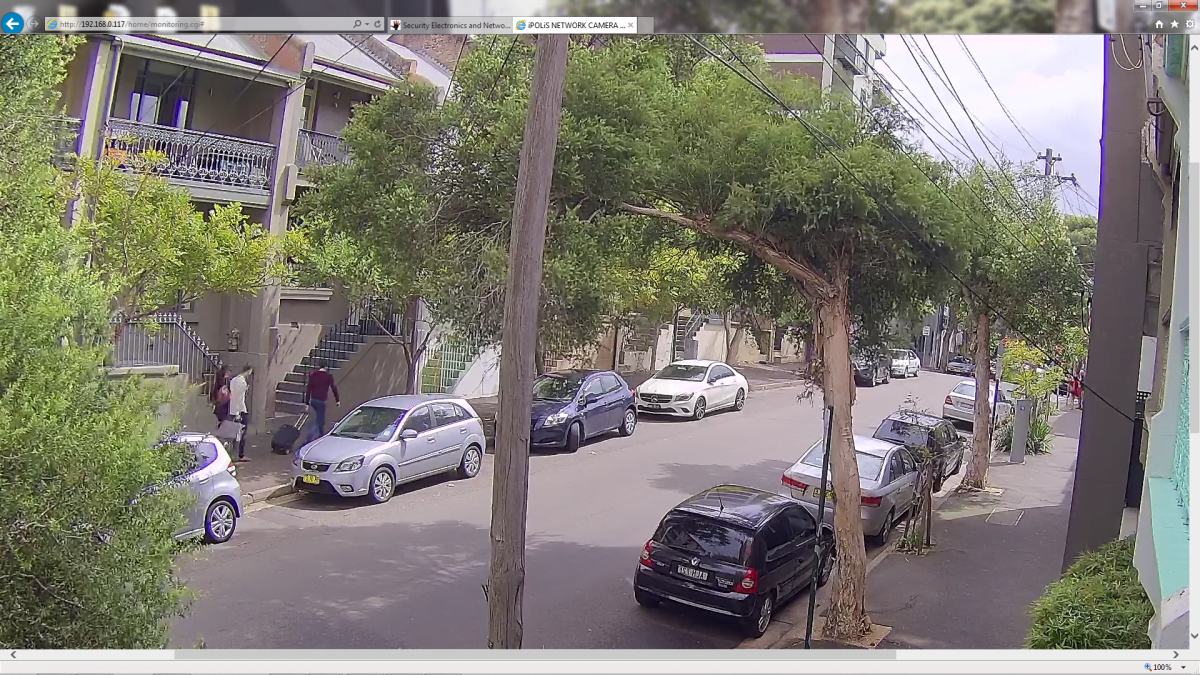
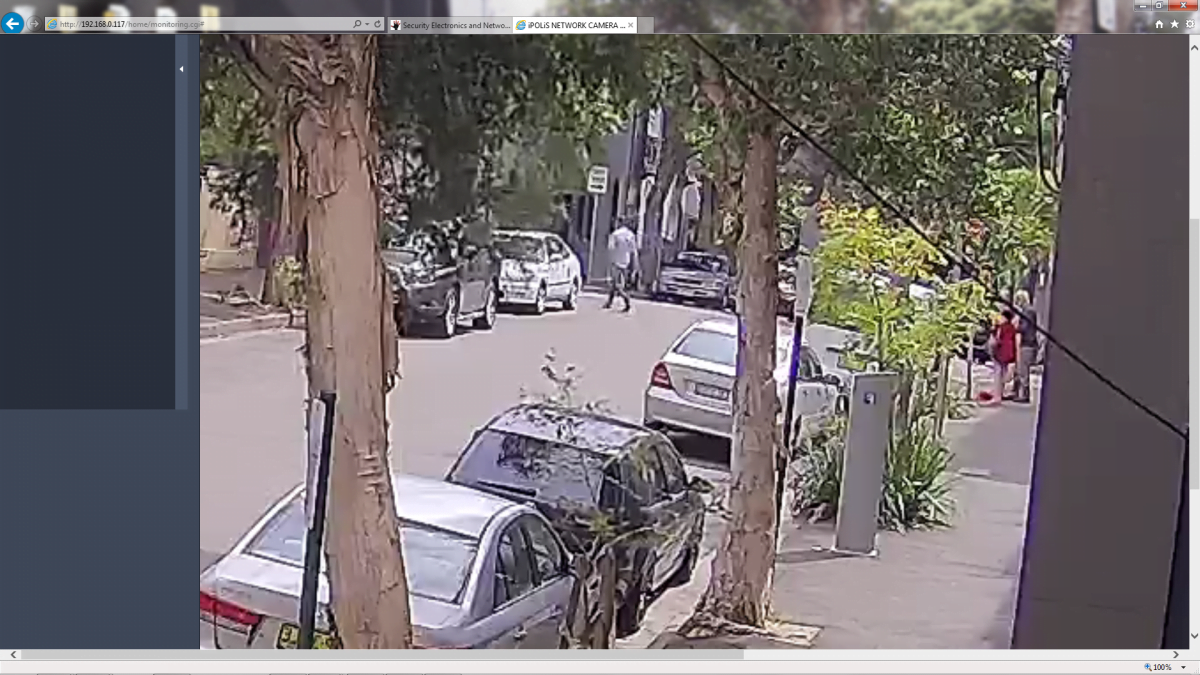
Top is full optical zoom, bottom is full optical with full digital zoom applied…
As the afternoon goes on, a storm comes through, things get dark and it starts to bucket down with rain. After scooting upstairs and taping my connections in a roll of plastic and making a drip loop, I settle down to watch the show. The loss of light doesn’t cost detail or depth of field. Regular readers will have heard me talk about the point at which a scene darkens noticeably – often at light levels of 5000 lux or more when WDR is activated. That doesn’t happen with the SNO. Performance is very consistent. There’s a howling gale blowing and the wild tree movement causes some slight stepping as the processor gets overwhelmed by heavy movement in 30 per cent of the scene but as things ease off, those moments pass.
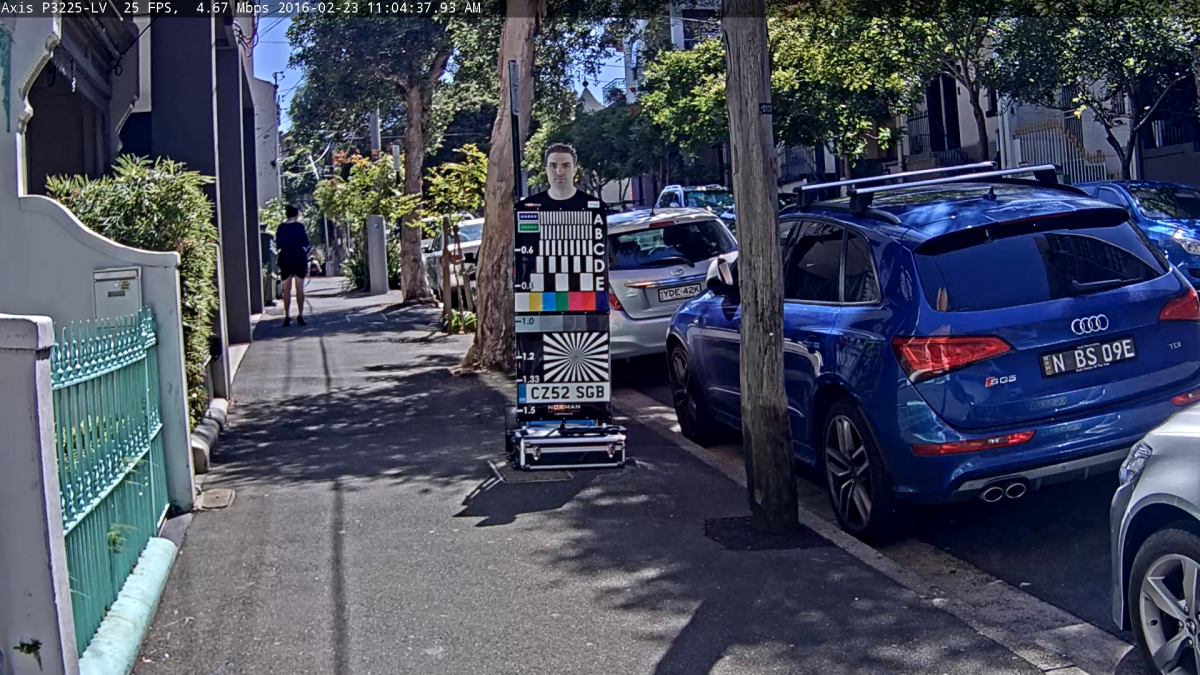
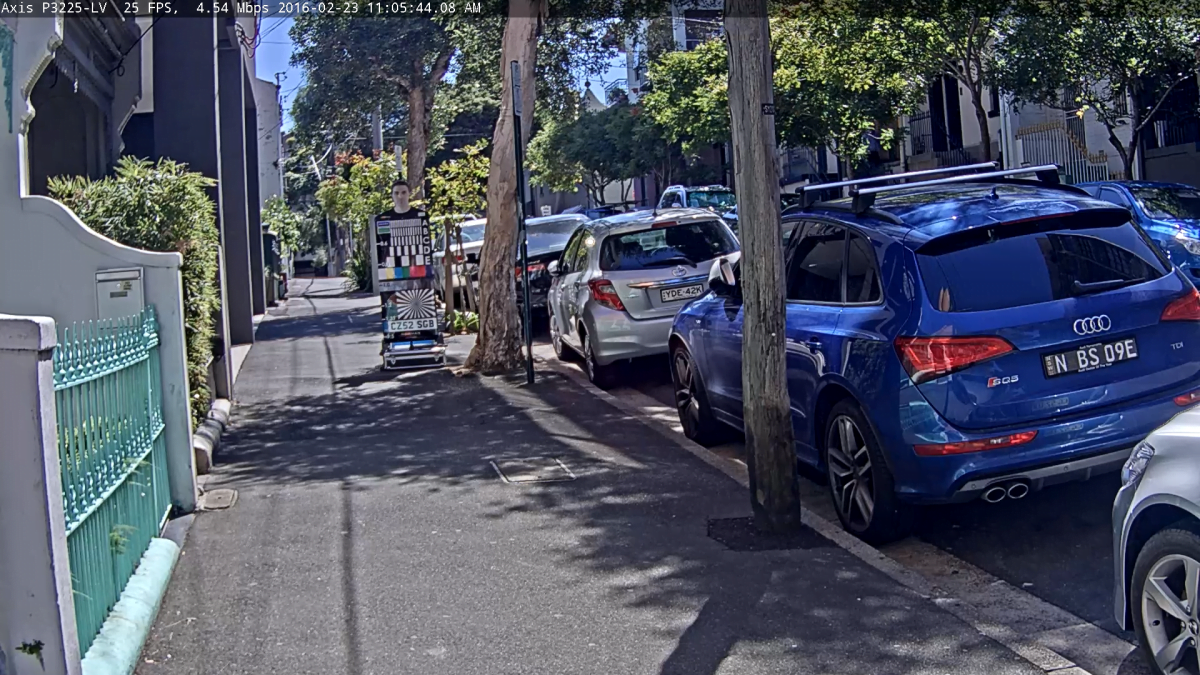
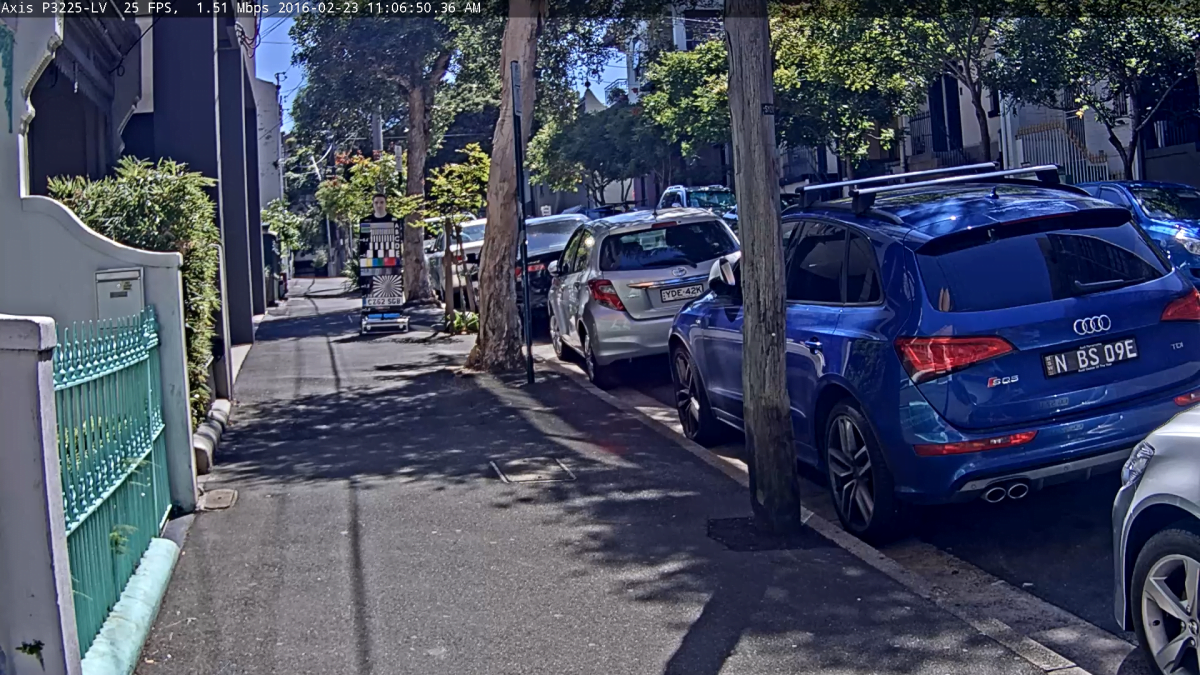
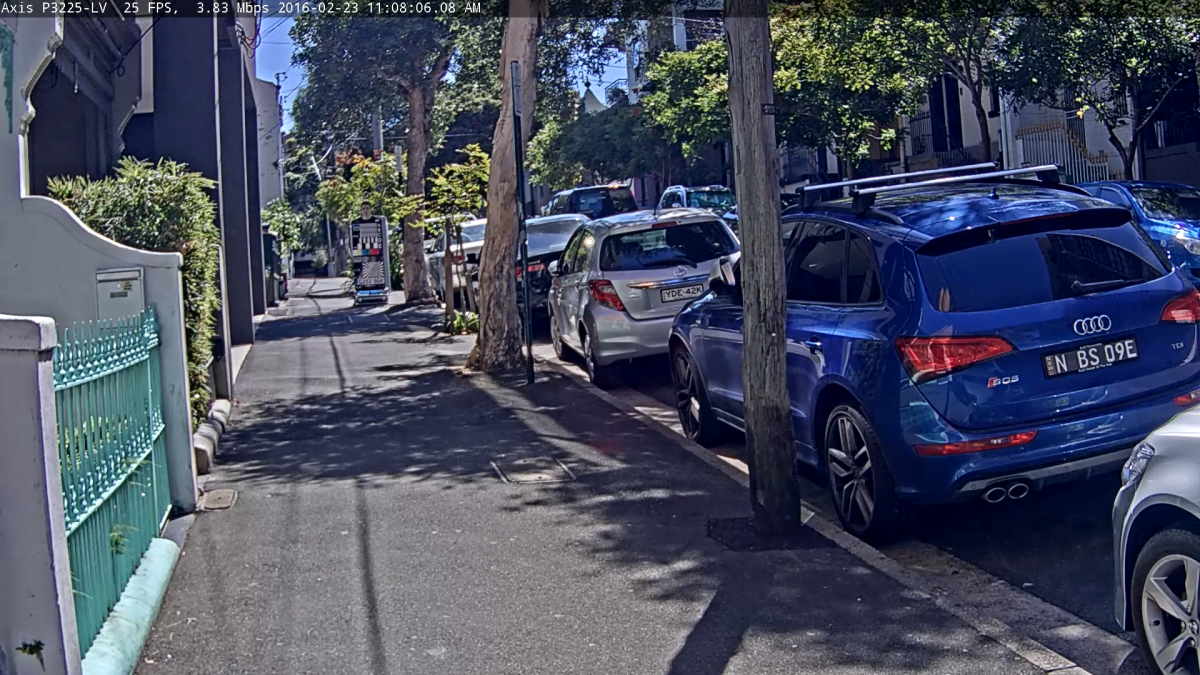
When the rain stops I get Norman out and trundle him up and down. At 12m, I have full detail. At 16m I have full detail. At 22m I lose the A line and court admissible face recognition. At 28m I have everything under the A line half Norman’s face, easy plates and can still confirm my focus is true. It’s these 2 longer range images that really underscore the power of the Samsung SNO-8081R. If you don’t care about depth of field, it’s not such a big deal but if you really do need faces and plates, as well as situational awareness, at those longer ranges, here’s your huckleberry.
Things start getting darker after about 5pm, thanks to the lowering cloud and squalls of rain still rolling in off the ocean. Is depth of field effected? No, not really. The images are just an f-stop darker for a given period of time. At around 545pm with heavy rain falling the light level starts to impact on depth of field. With moving vehicles on the street I still can’t get number plates but I can get everything else. Colour, make and model, along with distinguishing features. Moving plates are hard for ordinary cameras. I should point out that I set the shutter speed to 1/25th of a second during setup – I think it might have been 1/6th of a second default, which is too slow for security applications with movement in them. Even 1/25th is too slow to secure movement without motion blur – you really need 1/50th or faster.
At 6pm I start to see the orange glow of the low pressure sodium street lights reflecting in the puddles on the footpath. Depth of field, while reduced, is still useful out towards 70m. It’s very impressive to see. Detail of clothing is very clear. A cyclist pulls up at 50m and I can see all key details of clothing and electric bicycle without face recognition. At around about 7.15pm, with sub-10 lux of patchy light falling on the footpath, I lose face recognition to blur – shutter speed has dropped back – I can see it in the altered intensity of the whites in the scene. I still have static plates to 22m, clothing detail, including creases in shirts and patterns. At 730pm we are under 5 lux and the scene is still giving up more detail than I expected, with superb depth of field. Will the camera go into black and white out here? My instinct says not.
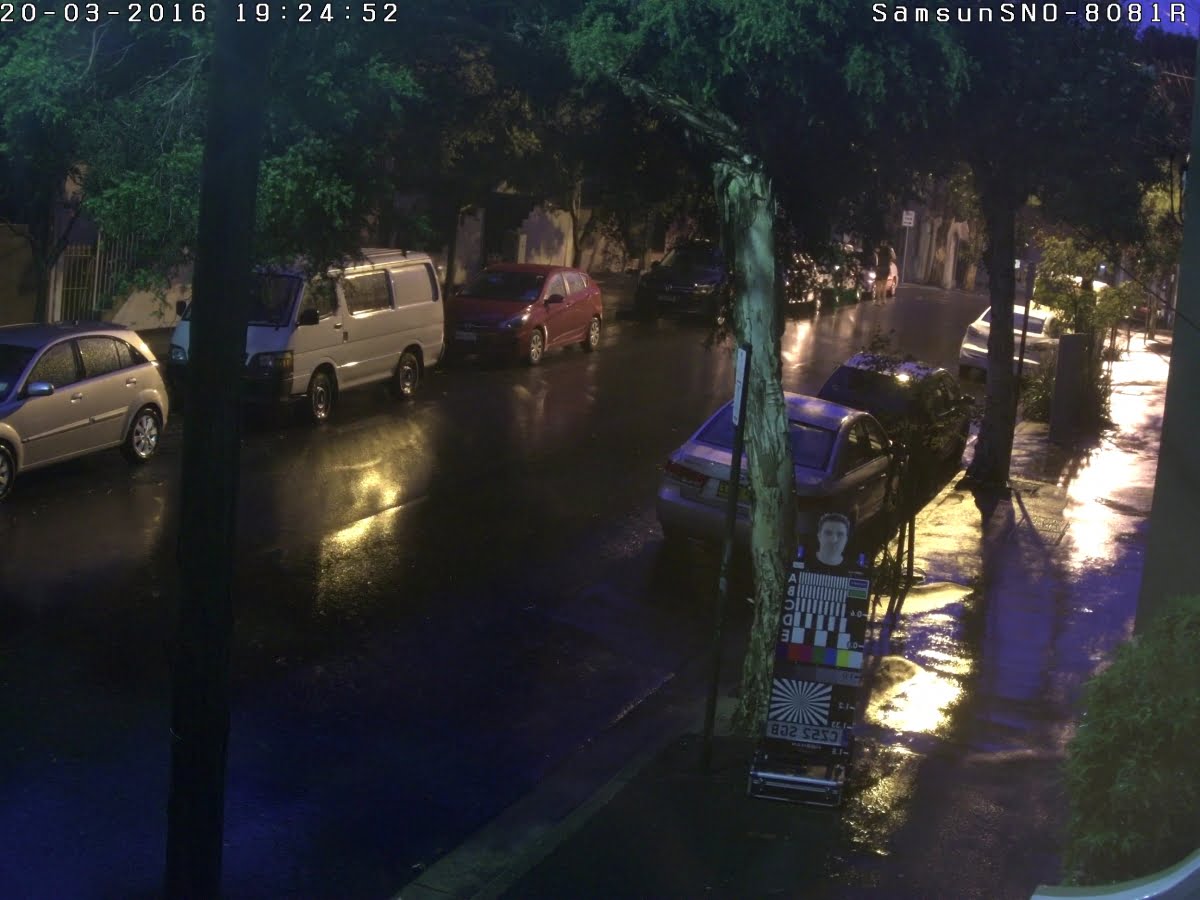
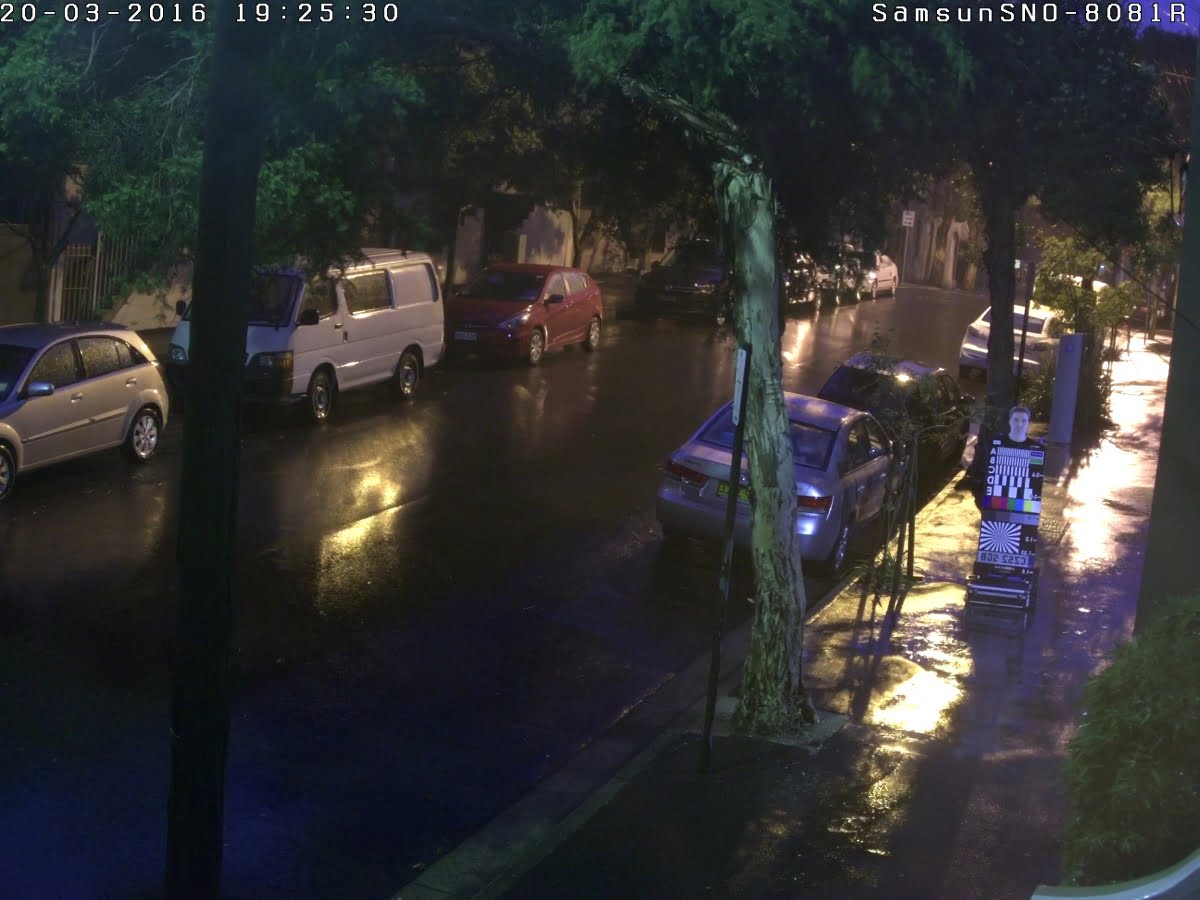
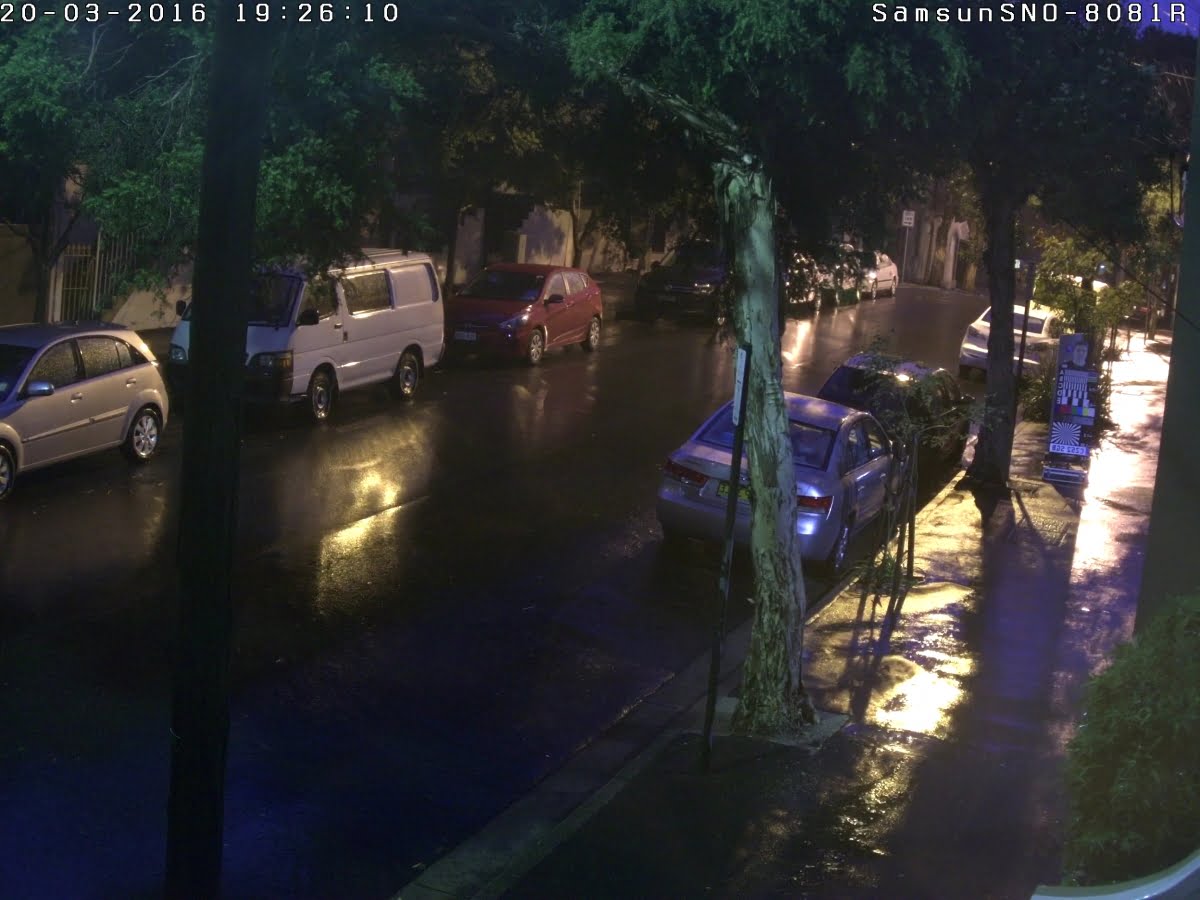
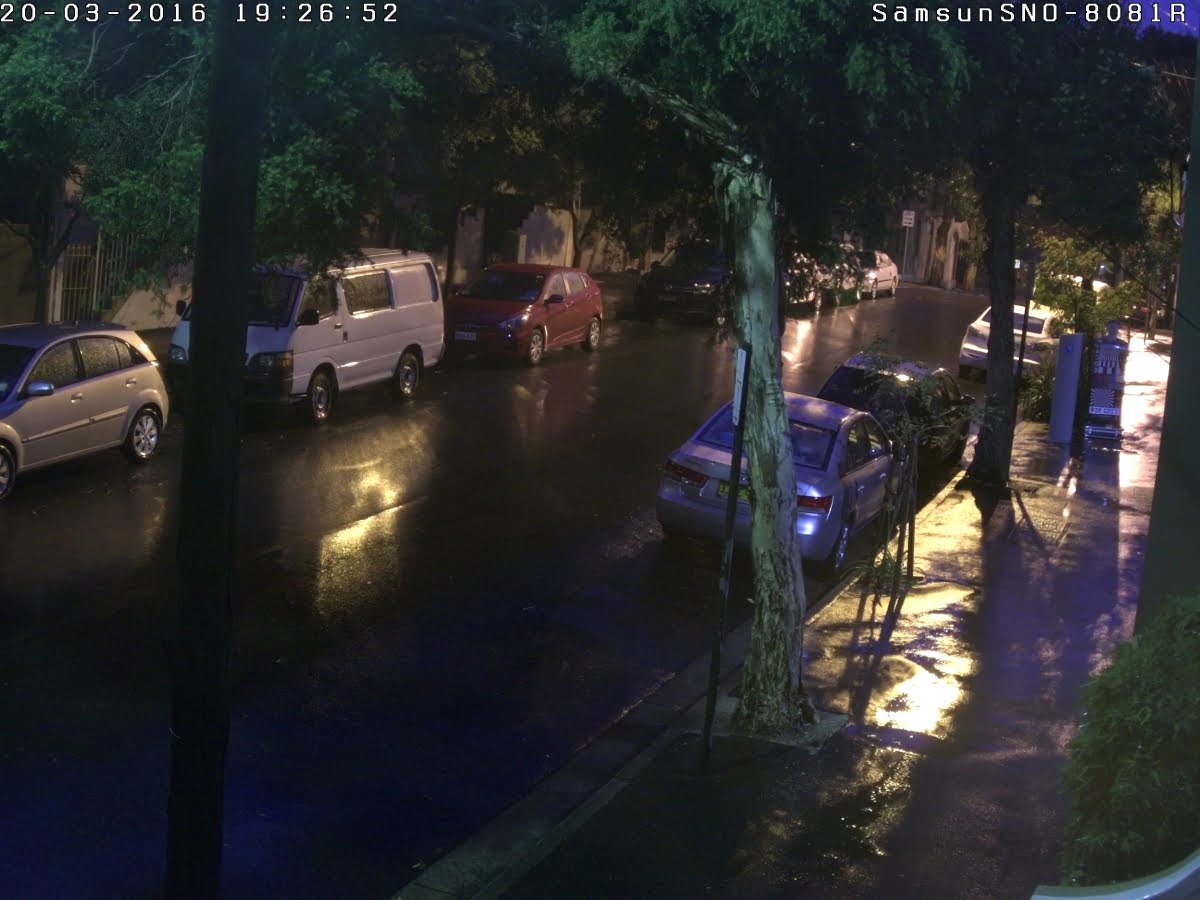
In the pouring rain Norman heads out to do his thing. I have full detail at 12m, including Norman’s cross expression as he stands in a puddle. At 16m the Yaffa floodlight comes on giving me about 15lux of sidelight at the face. I have the A-line and a face any court would recognise. At 22m I lose the A line and the face but retain all the rest, including surprising colour rendition. I go out to 28m and I am just hanging onto the B line but getting the static plate easily. The camera is still in colour – I’m going to have to test again in the lane to see IR. There simply is no substitute for pixels and the large sensor allows performance in low light to remain strong down under 10 lux.

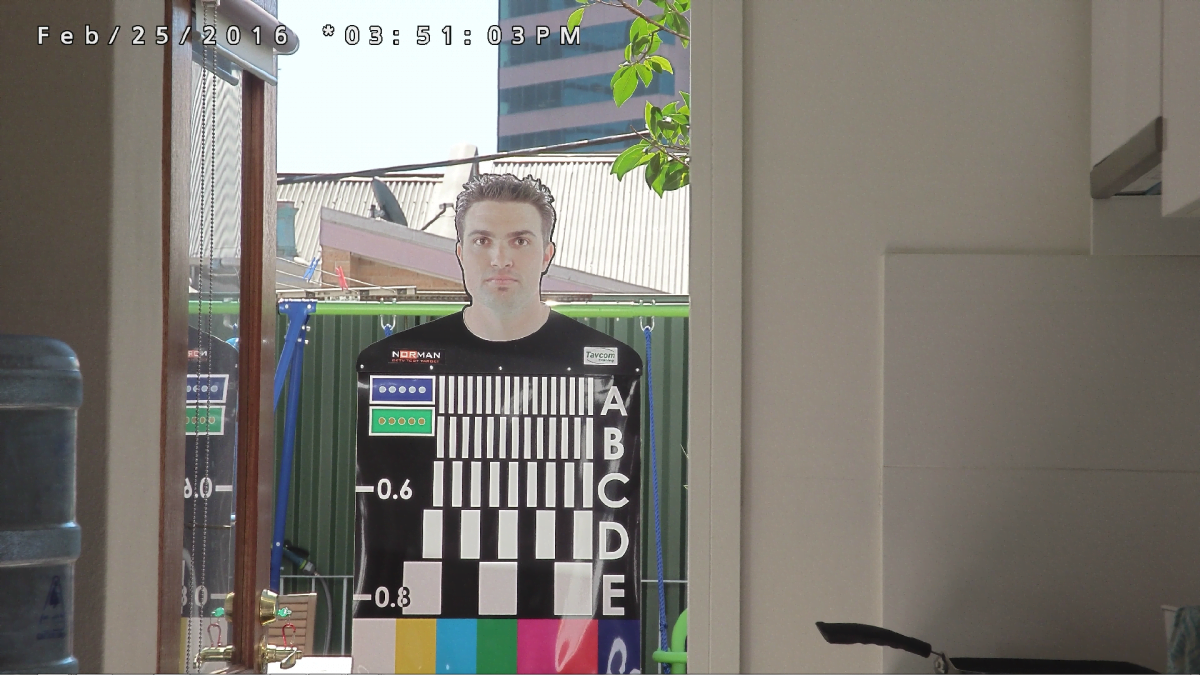
The following morning the sun is out and my next test is WDR at wide and tele and performance is strong there, too, though on this overcast day, there’s only 62,000 lux of glare out the back. Heading out the back with the camera on a tripod, I give it some torture against the now fully exposed afternoon sun and 80,000-plus lux.
There’s some flare but generally this magnesium fluoride coated lens is a trooper. At about 5pm, I settle the camera down into the lane and wait for the light to go. It’s not too bright out back now but the levels of detail at a focal length of about 7mm are strong. These are right up there with the best images we’ve ever seen out in the lane. I spend time mucking around with digital zoom – it's interesting the sorts of things this camera allows you to see.
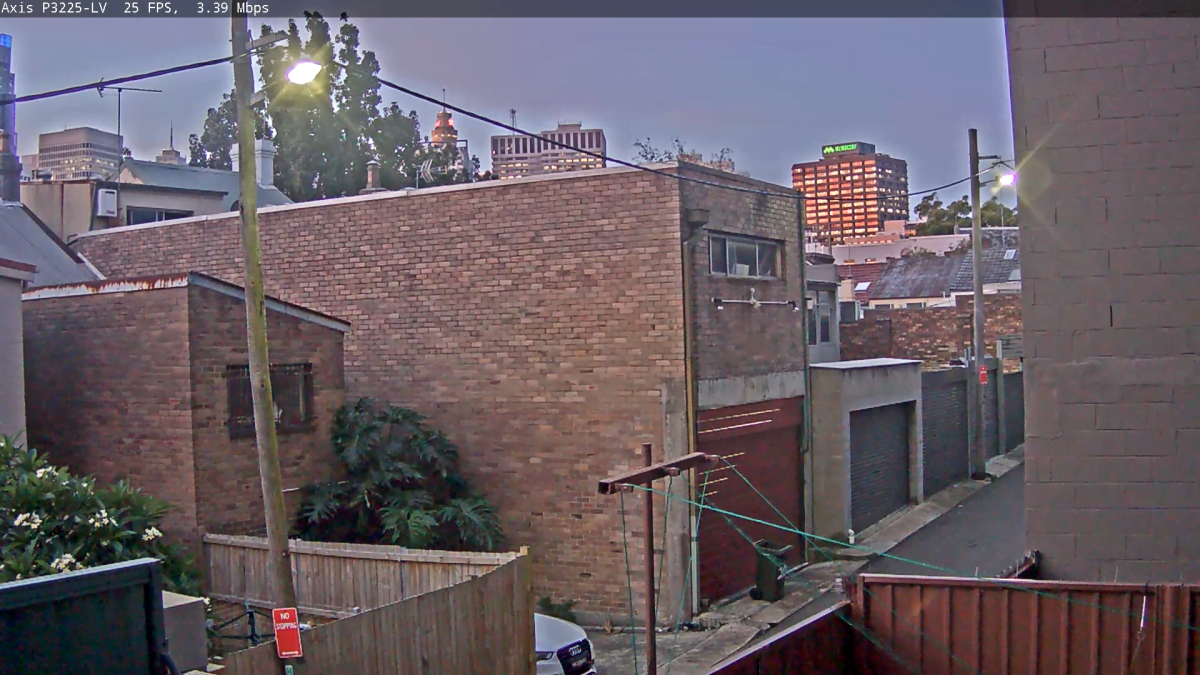
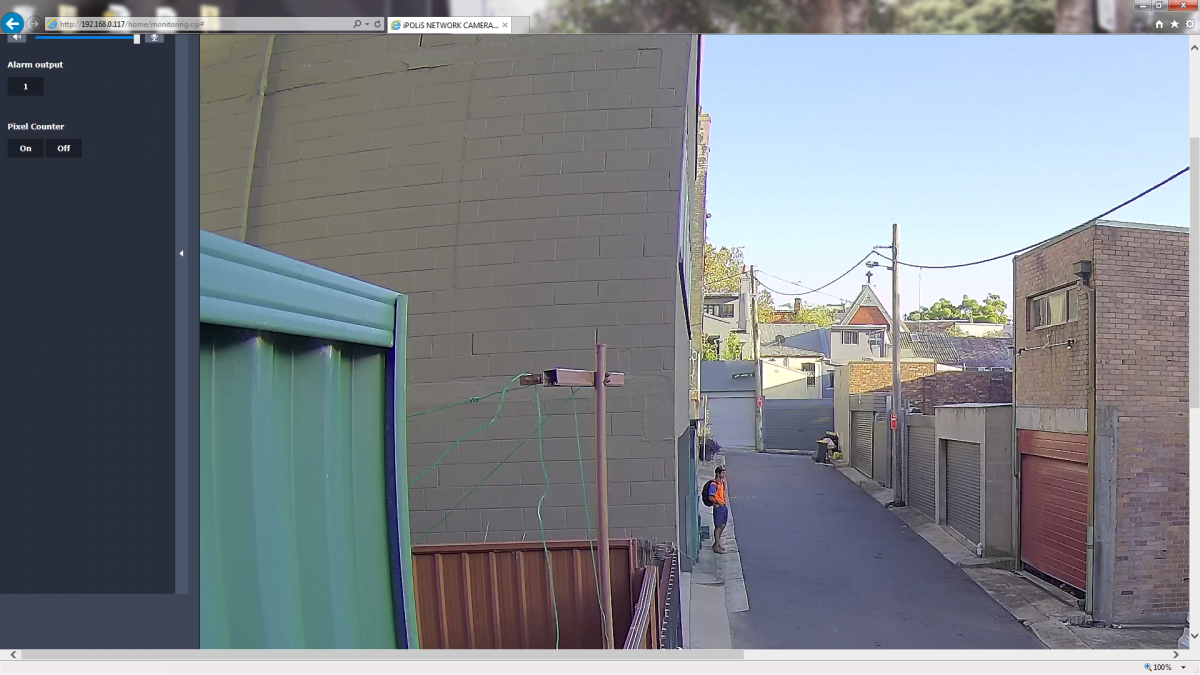
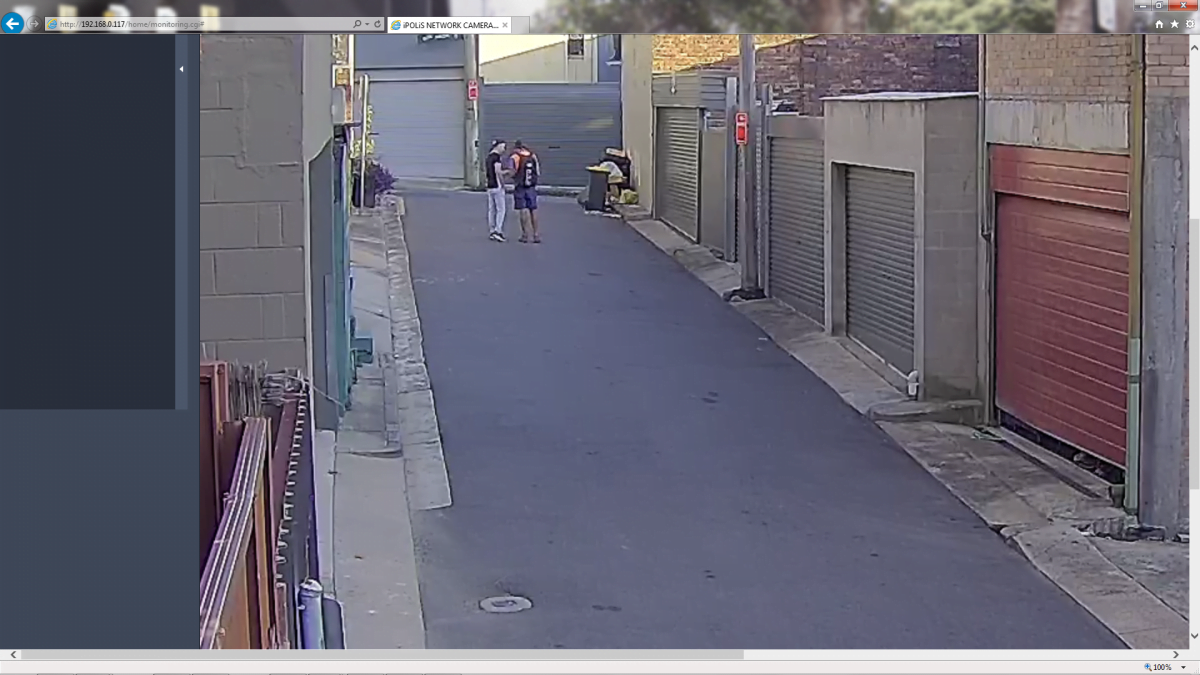
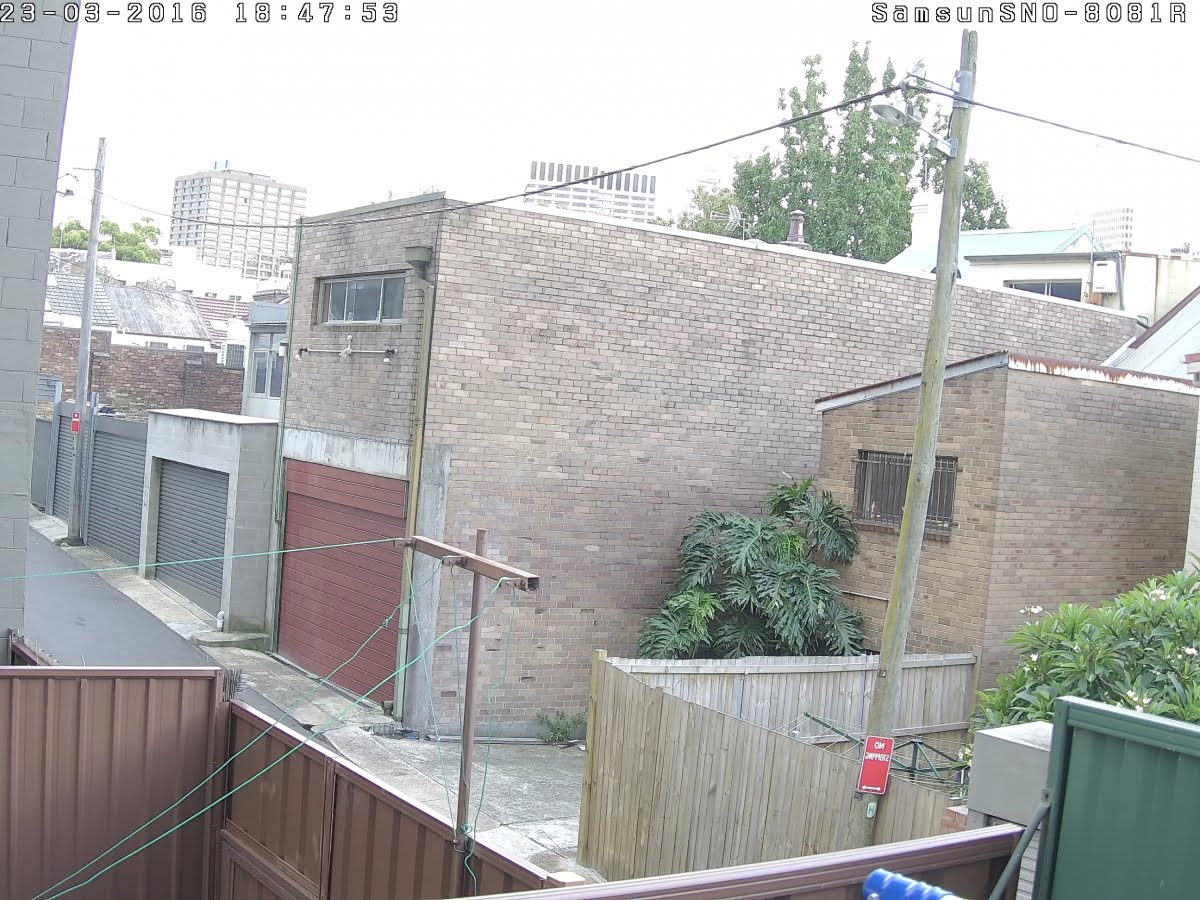
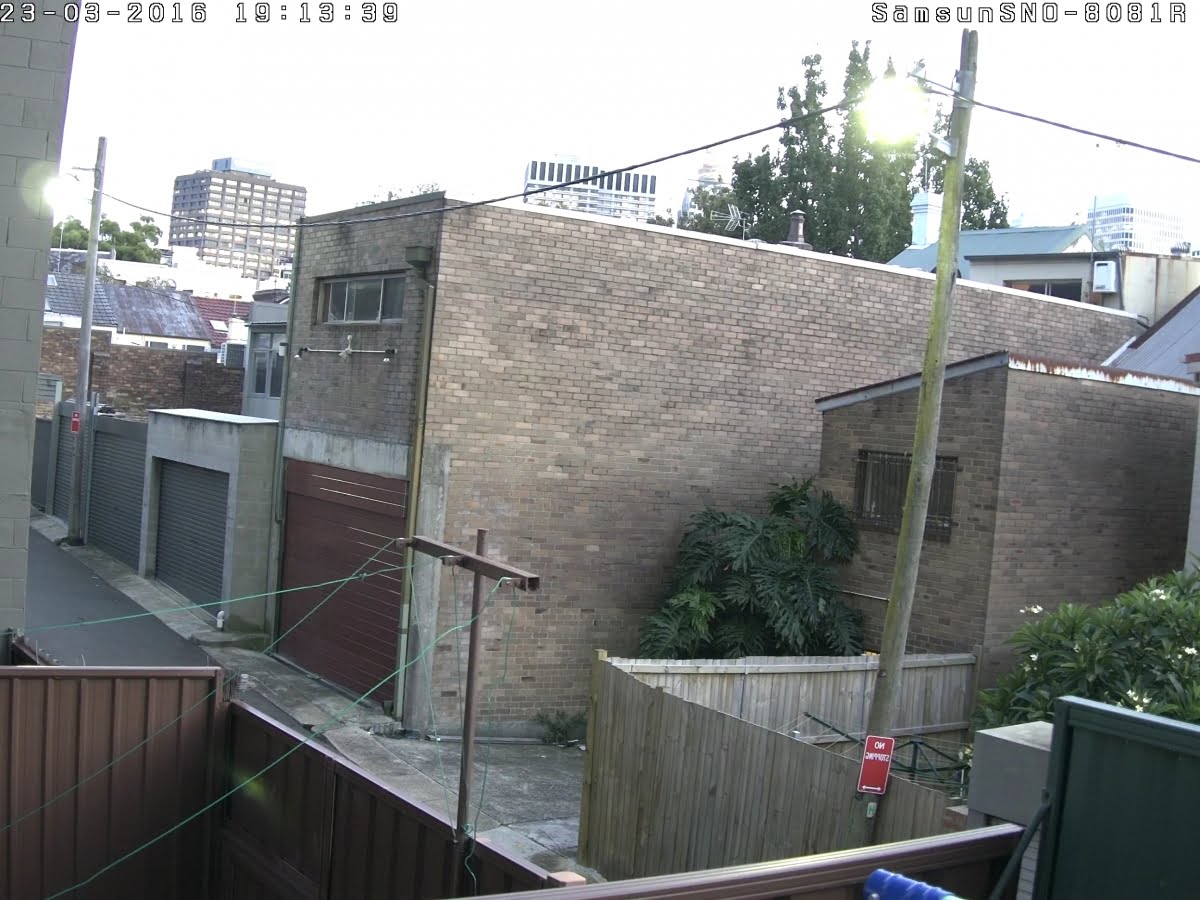
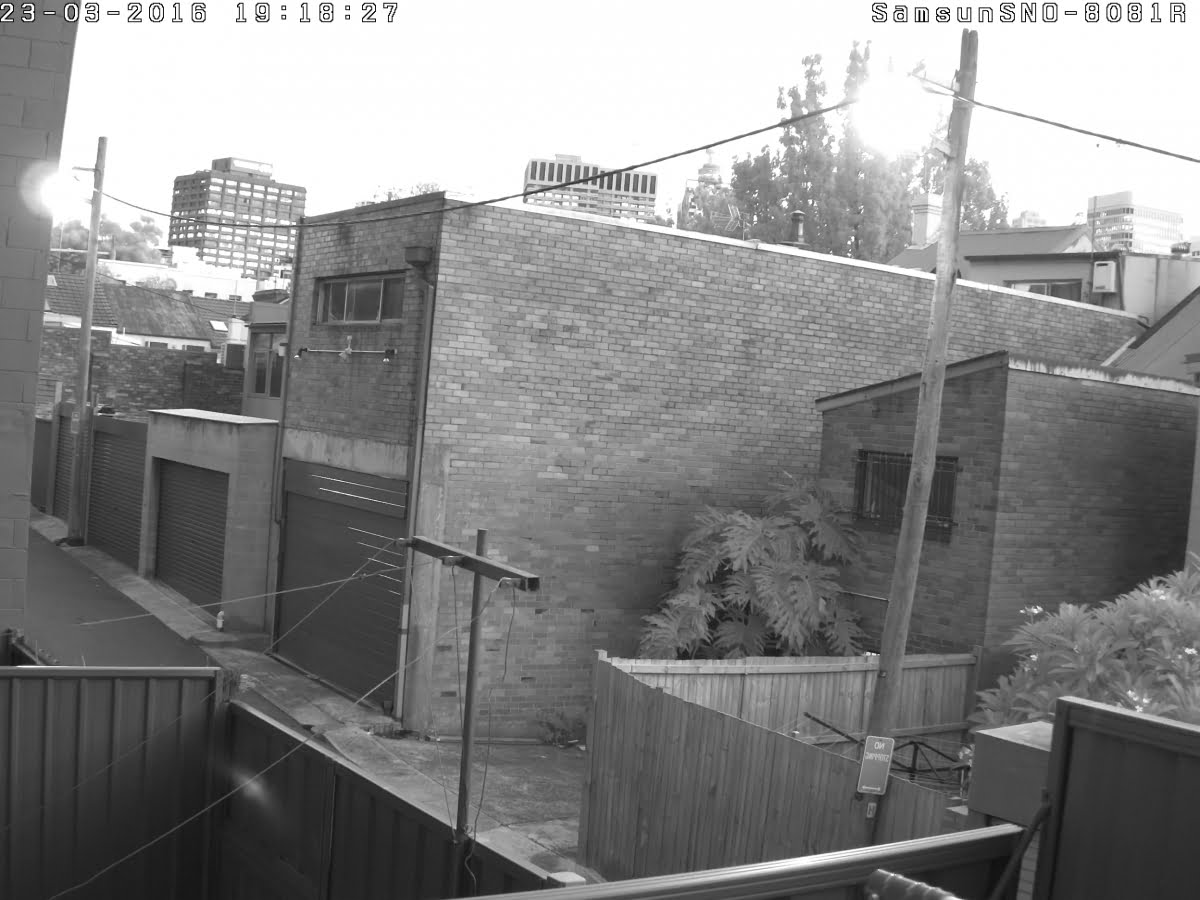
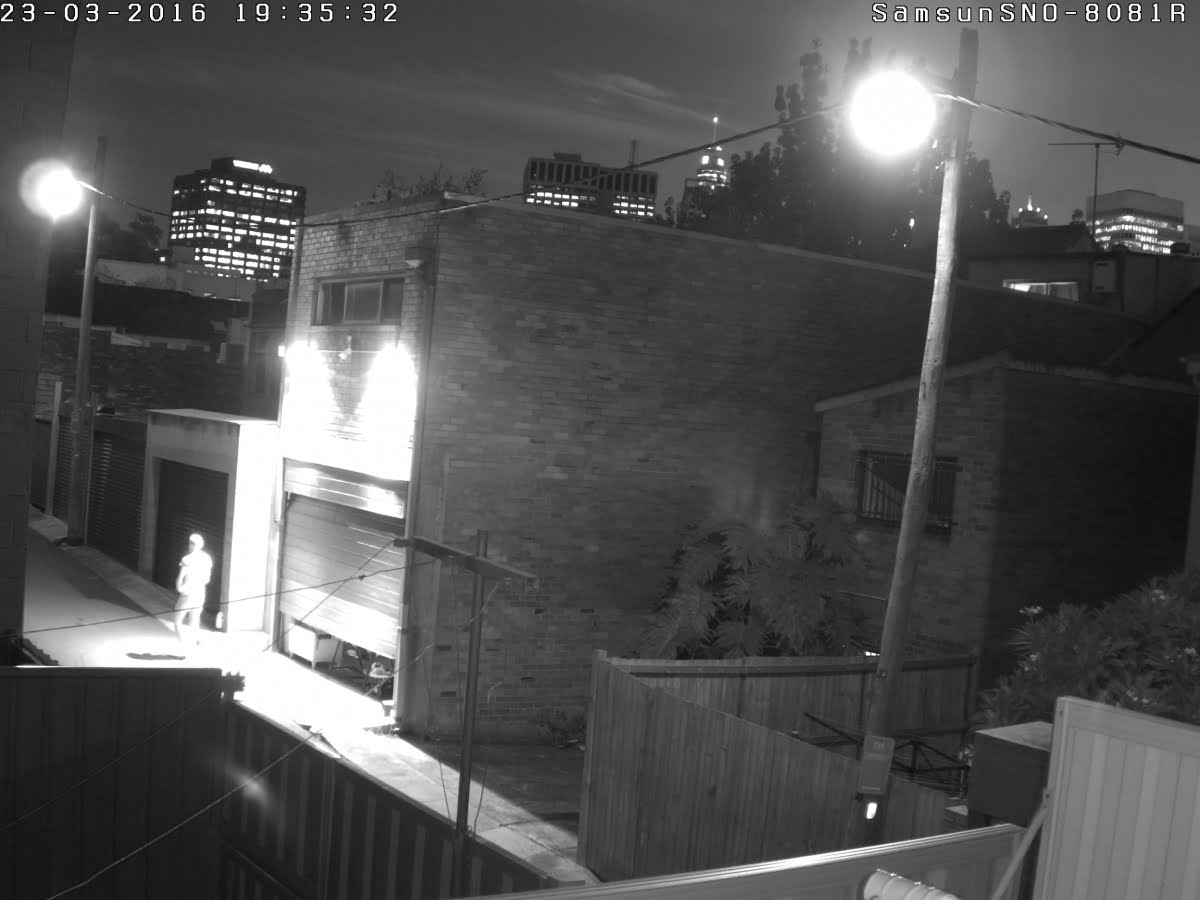
The transition from colour to monochrome is uniform. At 7.07pm there’s still colour and loads of fine detail in the image as the streetlights in the lane come on. They blooming as the shutter speed slows and ISO increases and then at 7.30pm with no mucking about, no loss of brightness in the image and very little loss of detail, the camera rolls over into monochrome. Light levels at this transition are 2.6EV – that’s 15 lux and I measured 6 out the front with the camera still in colour last night. Could it be because the camera was mounted higher up – closer to an adjacent streetlight and I measured lux at ground level not at the lens? Yes, that must be it. At about 730pm I realise I can’t see the IR beam and hop back into Setup. Ooops! While messing around earlier I’ve turned it off. With IR on I can see range to about 15m but there’s too much ambient light to get a sense of how it performs out towards 30m range.
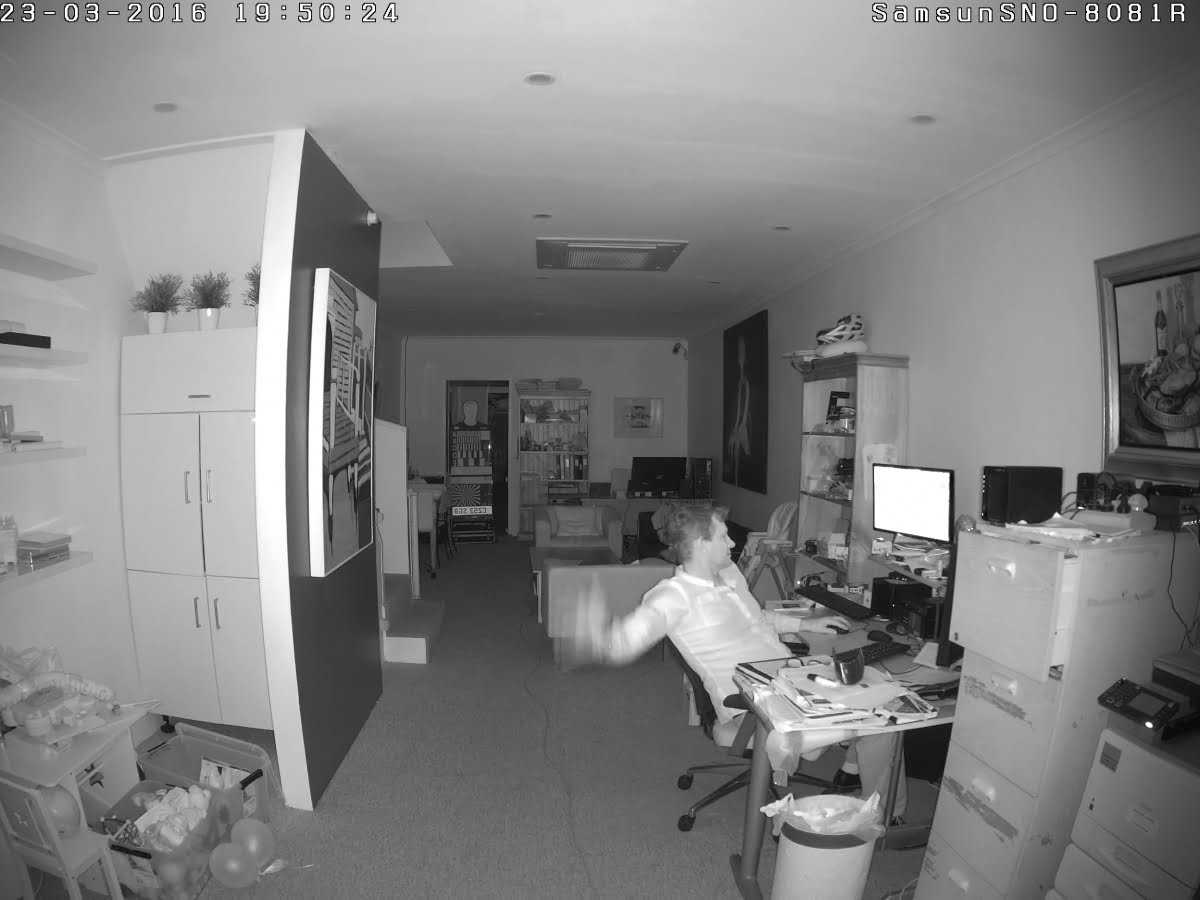
Now, I take the tripod back into the office and set up, giving about 12m range from the lens to Norman. IR performance is good. It’s very uniform and I can see it’s reaching around Norman to the kitchen door, so around 15m and certainly further if it were installed outside. What’s interesting again is how that high resolution allows you to score more detail from a scene even with IR. Rolling digital zoom, I have Norman from the A line all the way down. His face is lost to flare but that’s his plastic coating. My own face is entirely recognisable. I do some hand waving and resistance to blur with IR on is good, too.
Conclusion
I like the Samsung SNO-8081R bullet a lot. It’s optically powerful and its overall performance is very measured. It held colour much longer than I thought it would in our street scene and performance under IR with sub 1 lux at the lens was very strong with a good angle of view. This is a camera with many strengths – WDR, colour rendition, low light performance, resistance to motion blur for a camera with a high pixel count.
The standout feature is resolution delivered not just at the widest angles but at longest focal lengths, where digital zoom can be used on top of optical to get the absolute maximum from 50m scenes, giving strong situational awareness out to 70m even when conditions are extremely challenging. The SNO-8081R is a strong performer – flexible and very capable of supporting real time monitoring operations.
By John Adams
Key Features of Samsung SNO-8081R:
* Max 5MP (2592 x 1944) resolution
* 0.12Lux @ F1.3 colour, 0Lux B/W IR on
* 30fps all resolutions
* 3.93 – 9.4mm (2.4x) f1.3 motorized varifocal lens
* H.265/H.264/MJPEG support
* Day/Night (ICR), WDR (120dB)
* Simple focus, P-Iris
* Tampering, audio detection
* SD/SDHC/SDXC memory slot, NAS, Local PC support
* Hallway view – 90/270 degrees
* Lens distortion correction)
* IP66/IK10 against environment and vandalism.




